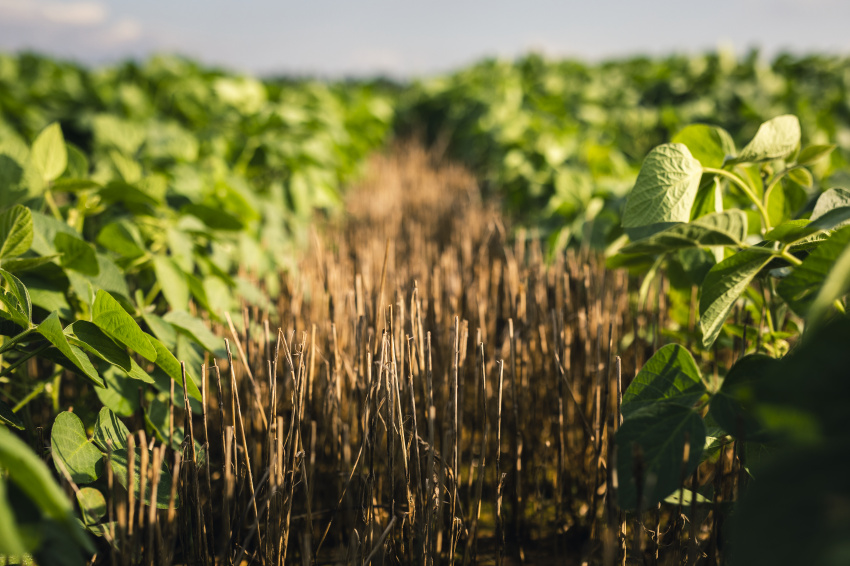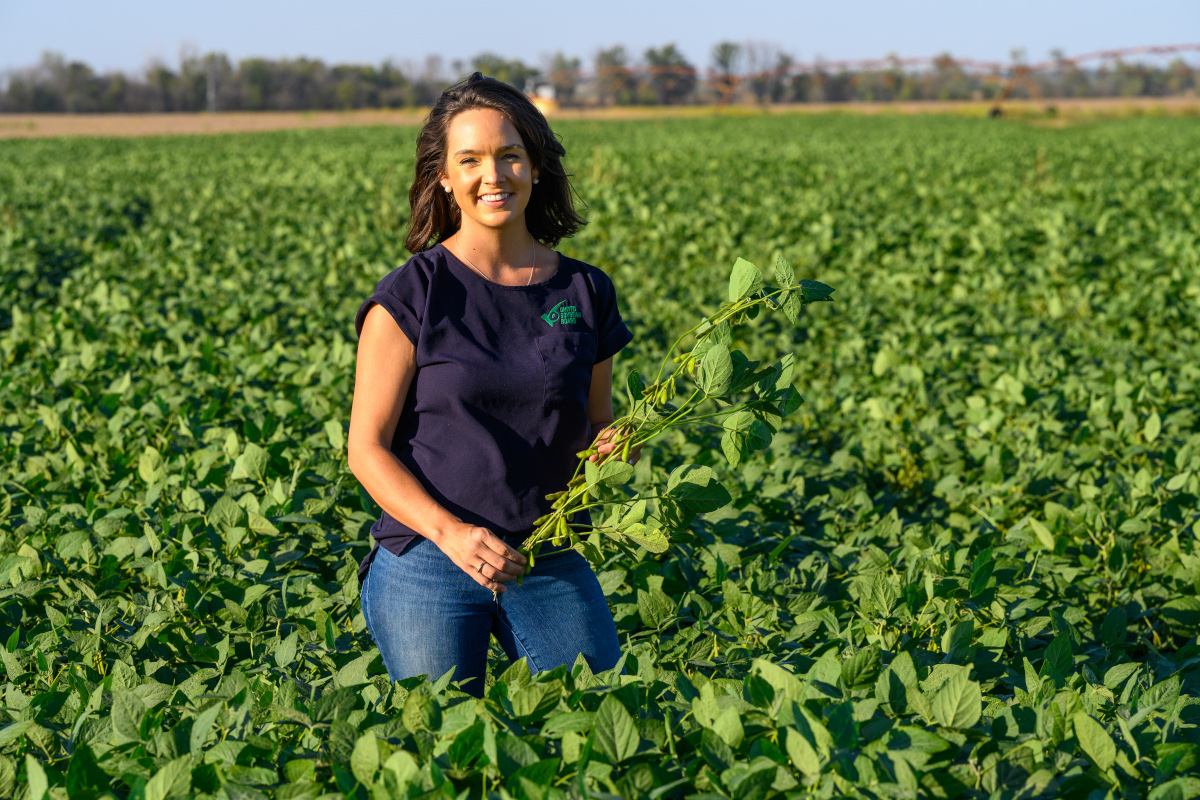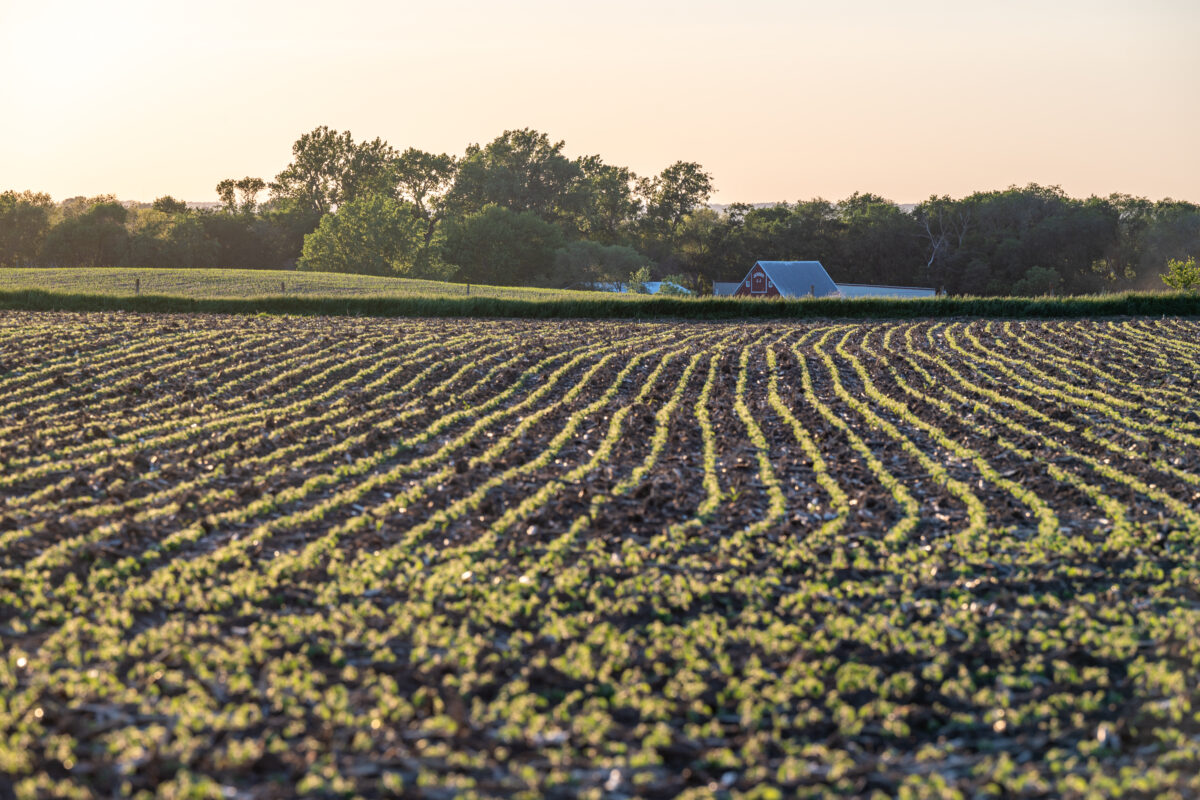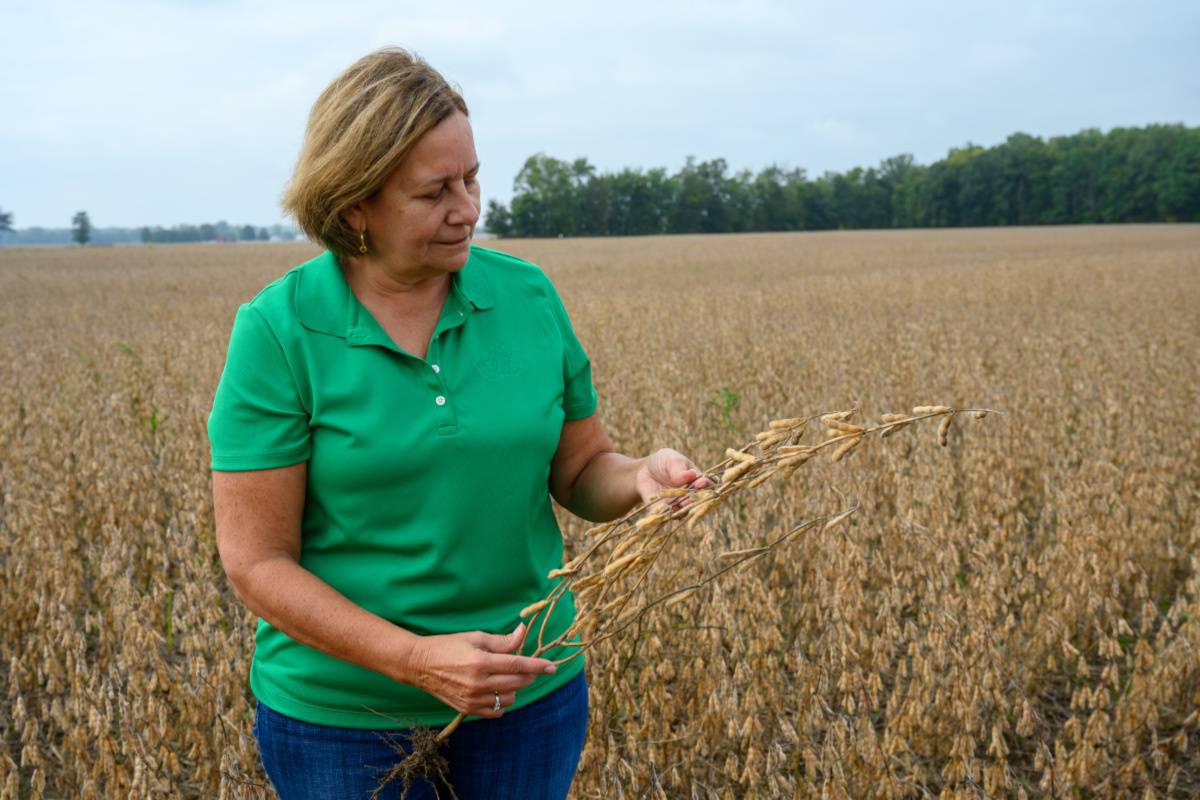Cultural Tools for Your Weed Management Strategy

Weed-free soybean fields and Rome — neither were built in a day. Don’t worry. Like the Colosseum came to life stone upon stone, you keep herbicide-resistant weeds out of your fields by building one management practice on another.
Resistant weeds have been around for years. The unfortunate reality is they are here to stay. Farmers must adapt management strategies to lessen the effects these weeds have on their soybeans.
“For years, chemicals were the go-to method for weed control,” said Iowa farmer and soy checkoff farmer-leader Tom Oswald. “Yet over-reliance on a limited set of chemical controls has led farmers to the current situation: severe herbicide resistance in many problematic weed species, with no new chemistries coming any time soon.”
Fortunately, researchers have found that an integrated weed management strategy is effective for managing resistant weeds. Integrating cultural methods such as crop rotation and tillage can reduce reliance on herbicide applications. The list of options is more extensive, however, and branches out to include ecological methods that many farmers may not have considered for effective control.
What Is Integrated Weed Management?
Integrated weed management is using chemical, mechanical and biological control methods in combination. Those practices can include diverse herbicide sites of action, cover crops, harvest weed seed control, crop rotations, competitive cultivars, narrow row spacing, high seeding rates, tillage and biocontrols to control weeds, with a strong emphasis on the principles of weed ecology.
To help farmers make the best management decisions for their farms, the soy checkoff founded the Take Action program in collaboration with other commodity groups, scientists at land-grant universities, leading agrochemical companies and scientific organizations. Take Action provides resources for implementing integrated pest management methods on the farm to reduce the impact of herbicide, fungicide and insect resistance.
Research conducted in 2019 through the soy checkoff’s investment in Take Action identified cultural methods of weed control that could potentially be adopted by U.S. soybean farmers. The resulting white paper, Shifting the Paradigm: An Ecological Systems Approach to Weed Management, was published in the peer-reviewed scientific journal Agriculture. Assistant professors of weed science Karla Gage, Ph.D., Southern Illinois University Carbondale, and Lauren Schwartz-Lazaro, Ph.D., Louisiana State University Agricultural Center, coauthored the research.
The white paper was commissioned to provide a review of ecological approaches to weed control with a focus on future possibilities and novel solutions, and also outlines several methods that are currently being used or researched throughout the world in production row crop systems. When adopted in combination with each other, these practices can help farmers manage weeds and the weed seedbank. The weed seedbank is a research focus for both the Gage and Schwartz-Lazaro research labs, and both scientists believe that knowledge of the weed seedbank and integrated practices can help farmers improve weed control.
“It all comes down to the weed seedbank. Any escapes in your cropping system could contribute to your seedbank,” Gage said. Practices to reduce the amount of weed seeds in the seedbank include:
- Equipment cleaning.
- Harvest weed seed control.
- Three- and four-year crop rotation.
- Limited tillage.
- Cover crops.
Other methods, such as biological and technological weed control, require more research before widespread adoption by farmers.
“We’re finding more and more cases of herbicide resistance,” Gage said. “We know we are putting a lot of selection for resistance on these weed populations because we are relying so heavily on herbicides for weed control. It’s time to look for ways to put different pressures on these weeds.”
Take Action has an array of resources available for farmers on weed-resistance management topics. This infographic outlines key practices for weed seed control before, during and after harvest. Also available is a fact sheet featuring 12 best management practices for managing herbicide resistance. In addition, the soy checkoff and the Take Action program collaborate with leading weed scientists to provide unbiased resources each season to help farmers ensure they’re rotating herbicide sites of action and have access to the best management practices available to address problem weeds. For more information, visit the Principles of Resistance page on the Take Action website.
Take Action also learns from farmer experiences, like those in Australia who have been battling herbicide resistance for years longer than those in the U.S. They’ve had to adapt and develop creative solutions to keep their fields as free from weeds as possible. One common focus is on harvest weed seed control, which includes several options to keep weed seeds out of the seedbank at harvest.
“For those of us in the United States, we know that if we let weeds go to seed, it will eventually build up resistance,” said Oswald, who traveled to Australia in 2018 with the checkoff. “In Australia, one of the things that I’ve really found interesting is the integrated approach already used.”
A few of the ways farmers have implemented harvest weed seed control include:
- Chaff carts — Attached mechanism collects and transfers chaff and the weed seeds that accompany it into a collection bin for disposal.
- Bale-direct systems — A baler attached to the combine creates chaff bales, which are removed from the field.
- Narrow windrow burning — Modified harvest equipment arranges residue in narrow windrows to be burned.
- Chaff lining— Funnels the chaff and weed seeds into narrow rows behind the combine, where the residue is left to overwinter. Usually considered a good entry-level harvest weed seed control option.
- Chaff tramlining — Also called chaff decks, places chaff in one or both of the combine’s wheel tracks, where it will be pushed into the ground or crushed by equipment.
- Seed destructors — Special machines like the integrated Harrington Seed Destructor that destroy weed seeds at harvest.
In 2018, Oswald and other Take Action representatives learned firsthand how harvest weed seed control works in Australia. Check out the four-part podcast series covering harvest weed seed control and other weed control methods straight from Australian farmers.
Adoption of these methods among U.S. farmers is relatively low, but farmers with severe resistance may look to adopt a wider variety of integrated weed management methods as conditions worsen.
“Using cultural and mechanical management tactics throughout the season is how farmers can work toward this idea of integrated weed management,” explained Schwartz-Lazaro.
Building the right weed management strategy for your farm may take some trial and error, but it will be worth it. Having resistant weeds under control will help ensure your farm’s long-term sustainability and keep U.S. soy a preferred choice for buyers.



